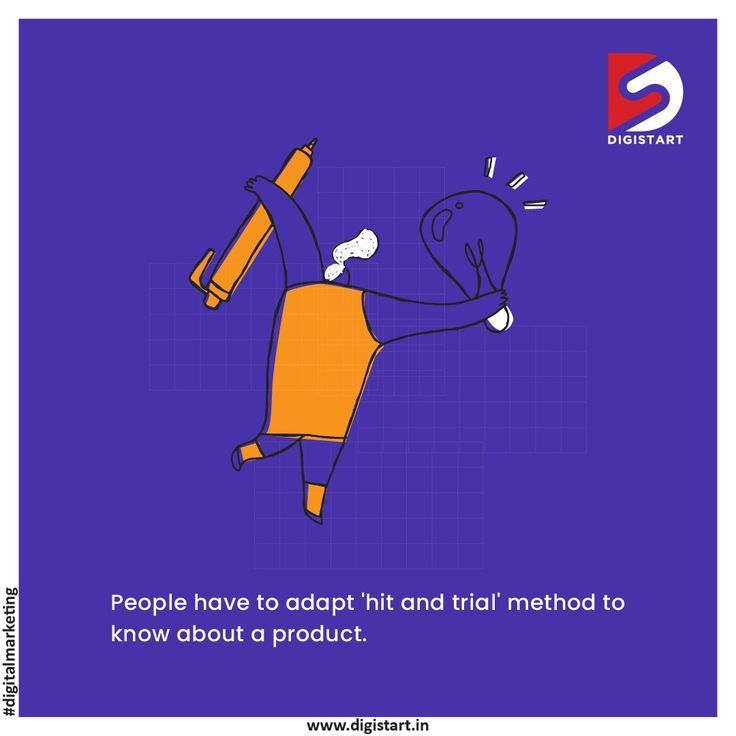Arts, A/V Technology & Communications Cluster: Career Pathways and Opportunities
Understand the arts, a / v technology, and communications cluster
The arts, audio / visual technology, and communications career cluster represent one of the virtually dynamic and creative sectors in today’s job market. This cluster encompasses careers that blend artistic expression, technical expertise, and effective communication to create, perform, or deliver content across various media platforms.
At its core, this cluster includes professions focus on create, produce, perform, writing, and publish multimedia content for diverse audiences. From traditional visual and perform arts to cut edge digital media, these careers offer pathways for individuals with both creative talents and technical aptitudes.
Key characteristics of the cluster
The arts, a / v technology, and communications cluster is distinguished by several define characteristics:
- Integration of creativity with technical skills
- Focus on effective communication across multiple platforms
- Emphasis on both artistic expression and practical application
- Incorporation of emerge technologies
- Diverse career paths require vary levels of education
Unlike many other career clusters that focus principally on either technical skills or creative abilities, this cluster unambiguously combine both aspects. Professionals in these fields must oftentimes master both the artistic elements of their work and the technical tools need to produce and distribute it.
Major pathways within the cluster
The arts, a / v technology, and communications cluster contain several distinct career pathways, each offer unique opportunities and require specific skill sets:
1. Audio and video technology and film
This pathway focus on the production and technical aspects of audio and visual media. Professionals in this field operate the equipment use to record, edit, and produce audio and video content.
Key careers include:
- Audio engineers and technicians
- Broadcast technicians
- Camera operators
- Film and video editors
- Sound designers
- Lighting technicians
These roles typically require technical training in specialized equipment and software, with many professionals hold associate or bachelor’s degrees in fields like audio engineering, film production, or broadcast technology.
2. Journalism and broadcasting
This pathway center on gathering, analyze, and distribute news and information through various media channels. Professionals in this field focus on report events, conduct interviews, and create content for news outlets.

Source: fhs.frenship.net
Common careers include:
- Journalists and reporters
- News anchors
- Broadcast analysts
- Editors
- Producers
- Photojournalists
Most positions in journalism and broadcasting require strong writing and communication skills, with many employers prefer candidates with bachelor’s degrees in journalism, communications, or related fields.
3. Visual arts
The visual arts pathway encompass careers focus on create visual content through various mediums. This includes both traditional art forms and digital creations.
Notable careers in this pathway include:
- Graphic designers
- Illustrators
- Photographers
- Animators
- Art directors
- Fashion designers
- Interior designers
Education requirements vary wide in the visual arts, with some professionals hold formal degrees in fine arts, graphic design, or related fields, while others may be self-teach or have complete specialized certificate programs.
4. Perform arts
The perform arts pathway include careers focus on live performances and entertainment. These professionals bring stories and emotions to life through acting, music, dance, and other performance mediums.
Key careers include:
- Actors and actresses
- Musicians and composers
- Dancers and choreographers
- Directors
- Producers
- Stage managers
Train for perform arts careers range from formal conservatory education to on the job experience. Many professionals combine formal training with continuous practice and professional development.

Source: valenciacollege.edu
5. Printing technology
This pathway focus on the production and distribution of print materials. Though traditional printing has evolved with digital technology, thisremainsn an important sector within the cluster.
Common careers include:
- Print production managers
- Press operators
- Bind and finishing workers
- Digital print technicians
- Prepress technicians
Many printing technology careers require specialized technical training, with some positions require associate degrees or technical certifications in printing sciences or graphic communications.
6. Telecommunications
The telecommunications pathway encompass careers focus on the transmission of information through various communication channels. This includes both the technical infrastructure and content creation aspects.
Key careers include:
- Telecommunications line installers
- Network specialists
- Equipment technicians
- Communications analysts
- Satellite communications specialists
Most telecommunications careers require technical training, with many professionals hold associate or bachelor’s degrees in telecommunications, information technology, or related fields.
Skills and competencies value across the cluster
Despite the diversity of careers within this cluster, several core skills and competencies are value across most pathways:
Creative skills
- Visual and spatial awareness
- Creative problem solve
- Aesthetic sensibility
- Storyteller abilities
- Design thinking
Technical skills
- Proficiency with industry specific software and equipment
- Understanding of production processes
- Technical troubleshooting abilities
- Adaptability to new technologies
- Digital literacy
Communication skills
- Clear verbal and write communication
- Active listening
- Presentation abilities
- Interpersonal skills
- Audience awareness
Professional skills
- Project management
- Attention to detail
- Time management
- Collaboration and teamwork
- Adaptability and flexibility
Educational pathways and requirements
The arts, a / v technology, and communications cluster offer career opportunities for individuals with vary levels of education:
High school diploma or equivalent
Some entry level positions are accessible with a high school diploma, specially in areas like:
- Production assistants
- Print press operators
- Camera operators
- Technical support roles
Technical certificates and associate degrees
Many technical roles require specialized training through certificate programs or associate degrees in fields such as:
- Audio engineering
- Film production
- Graphic design
- Photography
- Broadcast technology
Bachelor’s degrees
Many professional positions require bachelor’s degrees in fields like:
- Fine arts
- Journalism
- Communications
- Film and television production
- Graphic design
- Theater arts
Advanced degrees
Some specialized or leadership roles benefit from master’s degrees or other advanced education:
- Master of fine arts (mMFA)
- Master’s in journalism
- Master’s in communications
- Master’s in media management
Current industry trends and job outlook
The arts, a / v technology, and communications cluster continue to evolve apace with technological advancements and change consumer preferences. Several key trends are presently shaped the industry:
Digital transformation
Traditional media continue to shift toward digital platforms, create new opportunities in:
- Digital content creation
- Streaming media production
- Virtual and augmented reality
- Interactive media development
Convergence of roles
Many professionals nowadays need to master multiple skill sets that antecedent belong to separate roles:
- Journalists who shoot and edit their own video
- Designers who code and develop websites
- Marketers who create visual content
Remote work and collaboration
Remote work technologies have transformed how creative teams collaborate:
- Cloud base production tools
- Virtual collaboration platforms
- Remote recording and editing capabilities
Growth areas
Several specific areas within the cluster are experience especially strong growth:
- Digital content creation for social media platforms
- User experience (uUX)and user interface ( ( UI)sign
- Podcast production and distribution
- Stream content development
- Virtual event production
Advantages of careers in arts, a / v technology, and communications
Careers in this cluster offer several distinct advantages:
Creative expression
Many roles allow for personal creative expression and artistic development, provide fulfillment beyond financial compensation.
Technological innovation
Professionals oftentimes work with cutting edge technologies, keep their skills relevant and engage with the latest innovations.
Diverse work environments
Career options span traditional corporate settings, freelance opportunities, entrepreneurial ventures, and project base work.
Cultural impact
Work in these fields oftentimes contribute to cultural conversations and can have meaningful social impact.
Portfolio base advancement
Career advancement oftentimes depend on demonstrate work quality through portfolios, allow talented individuals to progress base on merit quite than credentials unequalled.
Challenges in arts, a / v technology, and communications careers
Despite the advantages, careers in this cluster besides present certain challenges:
Competitive job market
Many creative fields attract numerous candidates, create intense competition for available positions.
Economic variability
Some sectors experience significant fluctuations in demand base on economic conditions and consumer spending.
Technological disruption
Rapid technological change can rapidly make specific skills obsolete, require continuous learning and adaptation.
Work-life balance
Project deadlines, production schedules, and performance demands can create challenge work hours and potential stress.
Income stability
Freelance and contract work, common in many creative fields, can create income variability and uncertainty.
Prepare for a career in the arts, a / v technology, and communications cluster
For those interested in pursue careers in this cluster, several strategies can help build a foundation for success:
Education and training
- Pursue relevant formal education in your area of interest
- Supplement formal education with specialized technical training
- Take advantage of online learn platforms for specific skills
- Attend workshops and masterclasses with industry professionals
Portfolio development
- Create and maintain a professional portfolio showcase your best work
- Regularly update your portfolio with new projects
- Develop a personal brand that highlight your unique strengths
- Consider create an online presence through a personal website or professional social media
Internships and entry level experience
- Seek internships with established companies in your field
- Volunteer for relevant projects to build experience
- Consider entry level positions that provide learn opportunities
- Participate in student productions or competitions
Network
- Join professional organizations in your field
- Attend industry events and conferences
- Connect with professionals through social media platforms
- Participate in community events relate to your interests
Which best describe the arts, a / v technology, and communications cluster?
The arts, a / v technology, and communications cluster is intimately described as a diverse grouping of careers that blend creative expression with technical expertise to create, produce, and distribute content across various media platforms. What distinguish this cluster from others is its unique integration of artistic vision with practical communication skills and technological proficiency.
Unlike strictly technical fields that focus principally on functionality, or strictly artistic pursuits that prioritize expression solely, careers in this cluster require professionals to balance both aspects. The successful professional in this cluster must understand both the artistic principles that make content compelling and the technical requirements that make it deliverable.
This cluster is likewise characterized by its constant evolution in response to technological advancements and change consumer preferences. From the traditional arts to cut edge digital media, the cluster encompass both establish practices with centuries of history and emerge fields that continue to develop with new technologies.
Conclusion
The arts, a / v technology, and communications cluster offer a rich landscape of career opportunities for individuals with diverse interests and talents. From traditional artistic expressions to cut edge digital media production, these careers combine creativity with technical expertise to create meaningful content for various audiences.
While the specific skills and educational requirements vary across different pathways within the cluster, all share a common focus on effective communication and creative problem-solving. As technology continue to evolve and media consumption habits change, professionals in these fields must remain adaptable and commit to continuous learning.
For those with both creative vision and technical aptitude, careers in the arts, a / v technology, and communications cluster offer the opportunity to combine passion with profession, create work that entertains, informs, and inspire audiences across multiple platforms and media.



